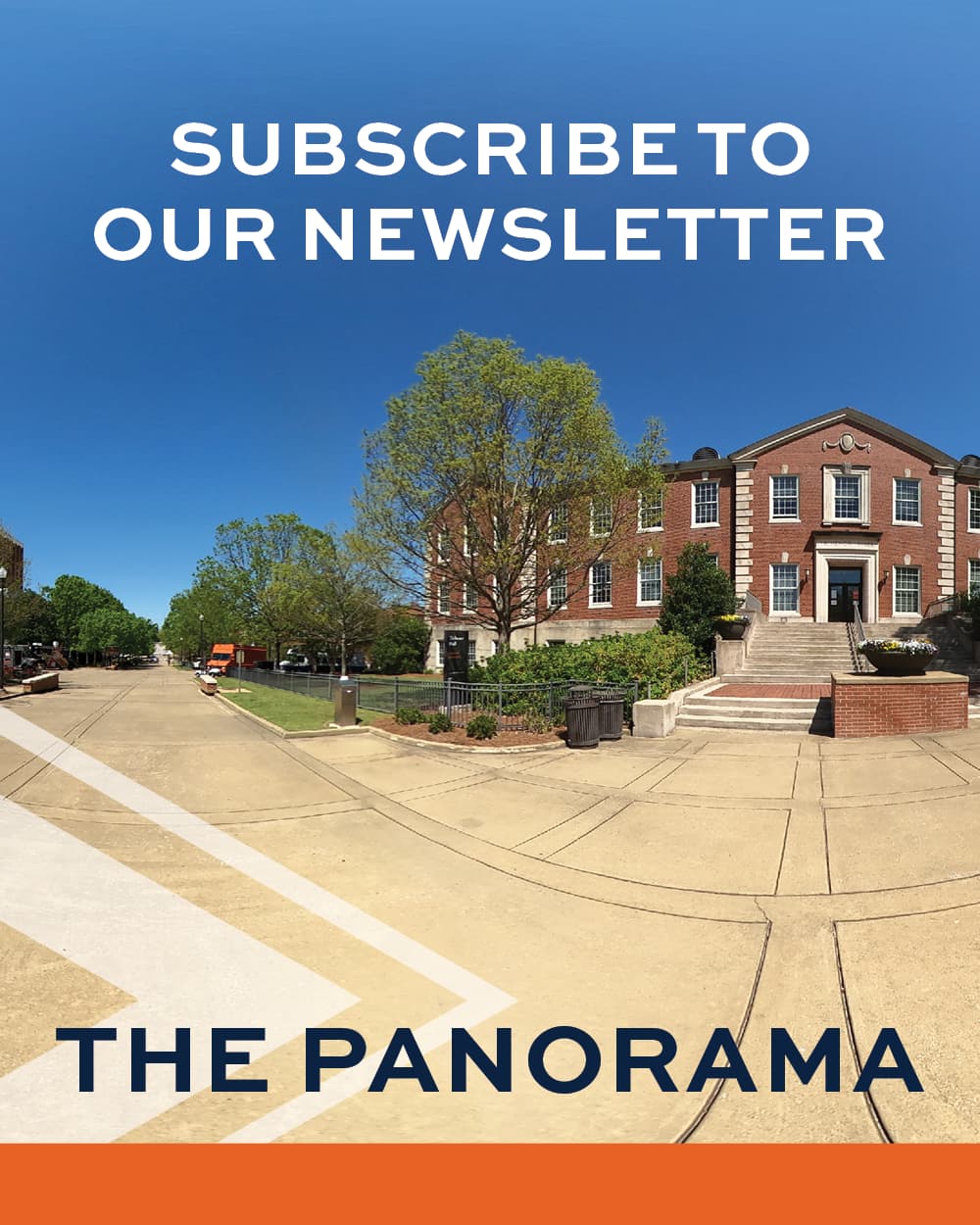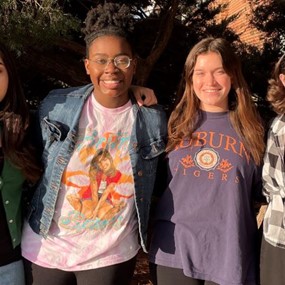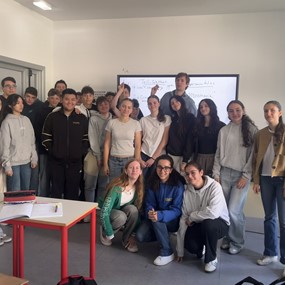Teaching Selma: Auburn University faculty host civil rights education workshop for K-12 teachers
Dozens of teachers came to Selma, Alabama, this summer to explore some of America’s most important civil rights sites and learn from Auburn University faculty about how to translate those experiences to improve student learning outcomes.
“Bloody Sunday, Selma and the Long Civil Rights Movement” invited teachers from across the country to explore understudied people and places of the civil rights movement through tours of Selma and surrounding sites and expert sessions with Auburn faculty.
The workshop employed place-based learning, which immersed participants at the intersection of race, place and freedom.
“It is experiential,” said Associate Professor of History Elijah Gaddis. “It is kind of visceral in a way to actually be there and see the places where this happened. So much of Selma is holy ground. It’s kind of a sacred place in a lot of ways for us Alabamians, for us as Americans and even more broadly than that.”
Through two, week-long workshops, teachers toured important Alabama civil rights locations, including the Bloody Sunday conflict site at the Edmund Pettus Bridge in Selma, the Zion United Methodist Church in Marion and the Freedom Riders Museum in Montgomery.
Auburn faculty led sessions on the history, landscape and teaching of Selma. Presentations included McWhorter Endowed Chair and Head of the School of Building Science Richard Burt’s research project to recreate the Bloody Sunday conflict site, Assistant Professor of Education Ashley Brown’s course on trauma-informed pedagogy and the Department of History’s Gaddis’ and Keith Hébert’s collection of oral history interviews on civil rights.
Draughon Associate Professor of Southern History Hébert said stories from those who live in Selma are important tools to understand the community and its legacy.
“By bringing folks from all over the country to experience Selma, they can get a better sense of just how integrated Selma is in the whole fabric of American history, the story of inequality in America, the story of opportunity in America and the story of civil rights in America,” Hébert said. “All that is in the hearts of the people of Selma, and that’s why we’re here, to share that with our guests.”
Participants also heard directly from civil rights movement foot soldiers, including JoAnne Bland and Charles Mauldin.
Mauldin grew up in Selma and saw his parents and teachers face discrimination every day. He was motivated to join the Selma movement because of that sense of inequity, and when Bernard Lafayette Jr. visited Selma, Mauldin joined with other students to participate in nonviolent demonstrations.
On Bloody Sunday, Mauldin was sixth in line to cross the Edmund Pettus Bridge. He participated in the teacher’s march, attended the meeting in which Dr. Martin Luther King Jr. decided to march to Montgomery and helped civil rights leaders like John Lewis mobilize support for the Voting Rights Act of 1965.
Today, he shares his story and the stories of other foot soldiers to inspire new generations to continue fighting for liberty.
“It was those students who took the chance to put their life on the line that end up changing history,” Mauldin said. “When I get a chance to, especially talking to students, I remind them that you don’t have to have everybody behind you. You just have to have a few committed people who get up every day and fight what is wrong in life and fight for what is right in life.
“Over a long period of time, that struggle forward gives you the opportunity to make a significant change, not only in your life but other people’s lives. And that’s what it’s really all about: growing the American democracy so that it becomes more inclusive, fair and democratic.”
Santina Cambor teaches sixth- and seventh-grade individuals and societies, a class similar to social studies, at the Atlanta Neighborhood Charter School. She was so moved by the foot soldiers’ stories that she woke up early the next day to start working on a lesson plan on oral histories.
Cambor said she’s taking that lesson plan back to her students, as well as the empathy, emotions and knowledge sharing she found at the workshop.
“I’m in a school where I can build curriculum, and it makes it more personal that I get to live the experience and get a better understanding of what’s happening,” Cambor said. “It’s a valuable tool to have staff and professors that actually invest in the work, invest in our learning and build valuable programs. People have spent years in Selma learning about the environment, talking to the people and that’s firsthand experience that not many people get.”
The National Endowment for the Humanities, or NEH, sponsored the workshop. Its Landmarks of American History and Culture Program supports professional development programs for K-12 teachers focused on significant, under-preserved historical sites.
NEH Program Officer Jason Harshman said teaching through place-based approaches encourages deeper learning for educators and critical thinking for students to approach local history and draw connections between historic places across the country.
“This is a project that we’ve been waiting to run,” Harshman said. “Selma fits into both this very local, what’s happening in the community, but also how that is then taken to a more national story because these teachers come from across the country. The ripple effect is the impact that that’s going to have, not just on the students, but so many of the teachers who will then lead professional development for their colleagues.”
Gaddis and Hébert’s work will also be one of several projects in the NEH’s “Why Here?” project. The goal of the project is to equip educators with the context, research and strategies to engage students with landmarks, history and culture.
Gaddis hopes Auburn’s work in Selma encourages people to realize its importance as a historical landmark and explore similar histories in their communities.
“These projects are really a culmination of a lot of years of work and those relationships that we built over the years,” Gaddis said. “I want people to really rethink what they came in knowing about Selma, about Alabama, about the civil rights movement, but also be able to go back to their own communities and find those hidden stories of place. Find the people that can help them learn more about their communities and their deep histories there."






